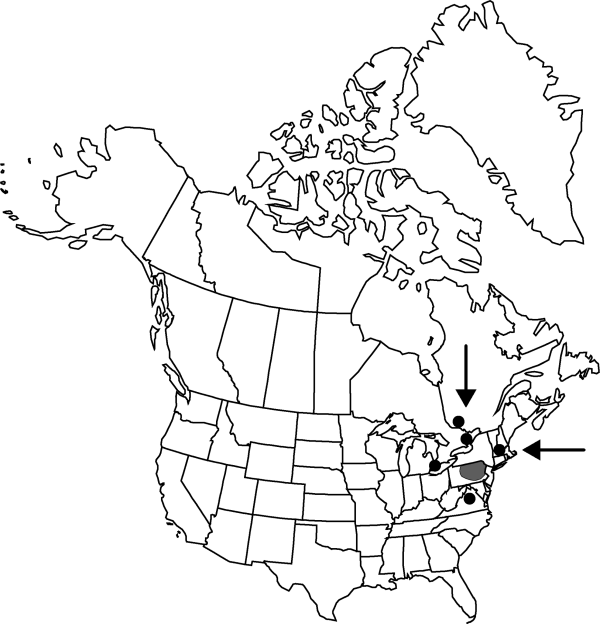Chenopodium foggii
Bartonia 27: 19, fig. 1. 1954.
Stems erect, simple (or branched), 1–1.5(–10) dm, sparsely farinose. Leaves nonaromatic; petiole 0.4–0.7 cm; blade ovate-lanceolate, 3-veined, (1–)1.4–2.4(–4) × (0.05–)0.5–1.1(–2) cm, base cuneate, margins entire or with 1–2 teeth below middle (several teeth), apex acute to acuminate, farinose. Inflorescences glomerules in terminal and lateral spikes, 2.5–5(–7) cm; glomerules ± spread out, maturing nearly the same time; bracts unknown. Flowers: perianth segments 5, distinct nearly to base; lobes elliptic or narrowly ovate, 0.7–1 × 0.5–0.7 mm, apex acute, keeled, farinose, covering fruit at maturity; stamens 5; stigmas 2, length unknown. Achenes or occasionally utricles ovoid; pericarp adherent, occasionally nonadherent, smooth. Seeds round, (1.1–)1.2(–1.4) mm diam., margins rounded; seed coat black, finely rugulate. 2n = 18.
Phenology: Fruiting late summer.
Habitat: Rocky woods
Elevation: 100-1000 m
Distribution

Ont., Que., Maine, Mass., N.H., Pa., Vt., Va.
Discussion
It has been suggested that Chenopodium foggii is a depauperate form of C. standleyanum. We believe that the citations for the upper Midwest represent either C. standleyanum or C. pratericola. Material from New England of C. foggii, while rare, does appear distinct because of its keeled perianth segments and sparse farinose hairs as well as its narrowly ovate to ovate leaves and smaller inflorescence.
Selected References
None.